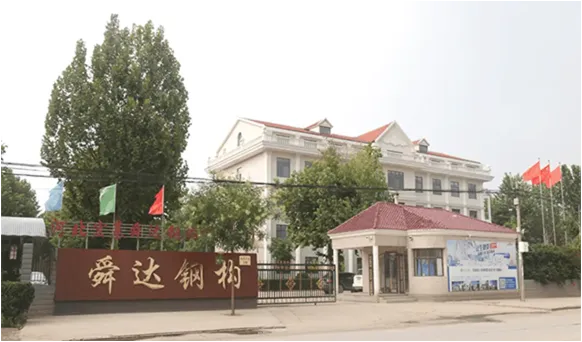- Afrikaans
- Albanian
- Amharic
- Arabic
- Armenian
- Azerbaijani
- Basque
- Belarusian
- Bengali
- Bosnian
- Bulgarian
- Catalan
- Cebuano
- Corsican
- Croatian
- Czech
- Danish
- Dutch
- English
- Esperanto
- Estonian
- Finnish
- French
- Frisian
- Galician
- Georgian
- German
- Greek
- Gujarati
- Haitian Creole
- hausa
- hawaiian
- Hebrew
- Hindi
- Miao
- Hungarian
- Icelandic
- igbo
- Indonesian
- irish
- Italian
- Japanese
- Javanese
- Kannada
- kazakh
- Khmer
- Rwandese
- Korean
- Kurdish
- Kyrgyz
- Lao
- Latin
- Latvian
- Lithuanian
- Luxembourgish
- Macedonian
- Malgashi
- Malay
- Malayalam
- Maltese
- Maori
- Marathi
- Mongolian
- Myanmar
- Nepali
- Norwegian
- Norwegian
- Occitan
- Pashto
- Persian
- Polish
- Portuguese
- Punjabi
- Romanian
- Russian
- Samoan
- Scottish Gaelic
- Serbian
- Sesotho
- Shona
- Sindhi
- Sinhala
- Slovak
- Slovenian
- Somali
- Spanish
- Sundanese
- Swahili
- Swedish
- Tagalog
- Tajik
- Tamil
- Tatar
- Telugu
- Thai
- Turkish
- Turkmen
- Ukrainian
- Urdu
- Uighur
- Uzbek
- Vietnamese
- Welsh
- Bantu
- Yiddish
- Yoruba
- Zulu
Nov . 10, 2024 03:10 Back to list
The Evolution and Importance of Industrial Building Construction
Industrial building construction has evolved significantly over the years, adapting to the changing needs of the economy and technological advancements. These structures play a critical role in facilitating production, storage, and distribution of goods, thus serving as a backbone for various sectors, including manufacturing, logistics, and warehousing.
The history of industrial building construction can be traced back to the Industrial Revolution in the late 18th century. During this period, the demand for factories surged as industries like textiles, iron, and coal mining expanded. Early industrial buildings were often characterized by their simple, utilitarian designs, mainly constructed from brick and iron. However, as technology progressed, so did the design and functionality of these buildings.
The 20th century brought about a significant shift in industrial building construction with the introduction of reinforced concrete and steel framing. These materials allowed for larger spans and more diverse architectural forms, enabling builders to create spacious layouts suitable for heavy machinery and large-scale operations. Furthermore, the rise of automated production lines necessitated buildings with specialized layouts that catered to efficient workflow. This led to innovations in construction techniques and a greater emphasis on safety, energy efficiency, and sustainability.
One of the key aspects of modern industrial construction is the integration of advanced technologies. Building Information Modeling (BIM), for instance, has revolutionized the planning and execution of industrial projects. By enabling architects and engineers to visualize and simulate the construction process, BIM enhances collaboration, reduces errors, and saves time and costs. Additionally, prefabrication techniques allow components of industrial buildings to be manufactured off-site, further streamlining the construction process.
industrial building construction

Sustainability has also become a focal point in industrial building design and construction. With growing concerns over climate change and energy consumption, there is a push towards eco-friendly practices. Many new industrial facilities are designed with energy-efficient systems, sustainable materials, and waste reduction strategies. For example, designs that utilize natural light and ventilation reduce reliance on artificial heating and cooling, while innovative waste management systems ensure minimal environmental impact.
Moreover, the strategic location of industrial buildings plays a crucial role in optimizing supply chains. Proximity to transportation hubs such as ports, railroads, and highways can significantly reduce logistics costs and enhance delivery times. As e-commerce continues to grow, the demand for well-located, versatile industrial spaces has skyrocketed. This trend has prompted developers to explore urban infill opportunities, where vacant or underutilized lands within urban settings are transformed into modern industrial complexes.
The COVID-19 pandemic has further influenced the industrial construction landscape, highlighting the need for adaptable spaces. With changes in consumer behavior and supply chain disruptions, there is a growing demand for facilities that can accommodate rapid shifts in production and distribution demands. Flexibility has become a vital consideration in the design of industrial buildings, leading to modular and multipurpose spaces that can be easily reconfigured to meet evolving requirements.
In conclusion, industrial building construction has undergone profound transformations, driven by advancements in technology, sustainability, and market demands. These structures are not merely physical assets; they represent the dynamic interplay between economic growth and innovative design. As the industrial sector continues to evolve, the importance of well-planned and constructed industrial facilities will remain paramount, supporting critical supply chains and fostering economic resilience. With a focus on sustainability and adaptability, the future of industrial building construction promises to meet the challenges of a rapidly changing world while driving productivity and efficiency in various industries.
-
How Do Prefabricated Steel Structures Transform Modern Construction?
NewsJul.14,2025
-
How Do Prefabricated Metal Buildings Redefine Modern Construction?
NewsJul.14,2025
-
How Do Prefab Insulated Metal Buildings and Steel Structures Revolutionize Modern Construction?
NewsJul.14,2025
-
How Do Pre - Engineered Steel Structures Redefine Modern Construction?
NewsJul.14,2025
-
Advancing Modular Construction with Prefabricated Metal Structures
NewsJul.14,2025
-
Advancing Industrial Infrastructure with Prefabricated Steel Solutions
NewsJul.14,2025
Products categories
Our Latest News
We have a professional design team and an excellent production and construction team.












